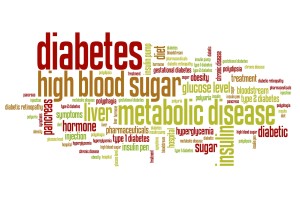
I ask each patient about his general health. I often hear prediabetes as a health issue. Prediabetes means the blood glucose levels are higher than normal but not yet high enough to be diagnosed as diabetes. This is the stage where lifestyle changes can significantly improve health and prevent the development of diabetes.
Research shows that you can lower your risk for type 2 diabetes by losing 7% of your body weight (that’s 15 pound if you weigh 200 pounds) and exercising 30 minutes a day.
Symptoms are not always present with prediabetes. To accurately diagnose prediabetes your doctor will do some blood tests.
- A1C measures your average blood glucose for the past 3 months.
Normal less than 5.7%
Prediabetes 5.7% to 6.4%
Diabetes 6.5% or higher
- Fasting Plasma Glucose tests your blood glucose after you have not eaten or drank anything for at least 8 hours.
Normal Less than 100 mg/dl
Prediabetes 100 mg/dl to 125 mg/dl
Diabetes 126 mg/dl or higher
People with prediabetes are at higher risk for developing type 2 diabetes and cardiovascular disease. If you are prediabetic you may have no symptoms or you may have the same symptoms as someone with diabetes. The best way to find out if you’re prediabetic is to see your doctor and have your blood tested.